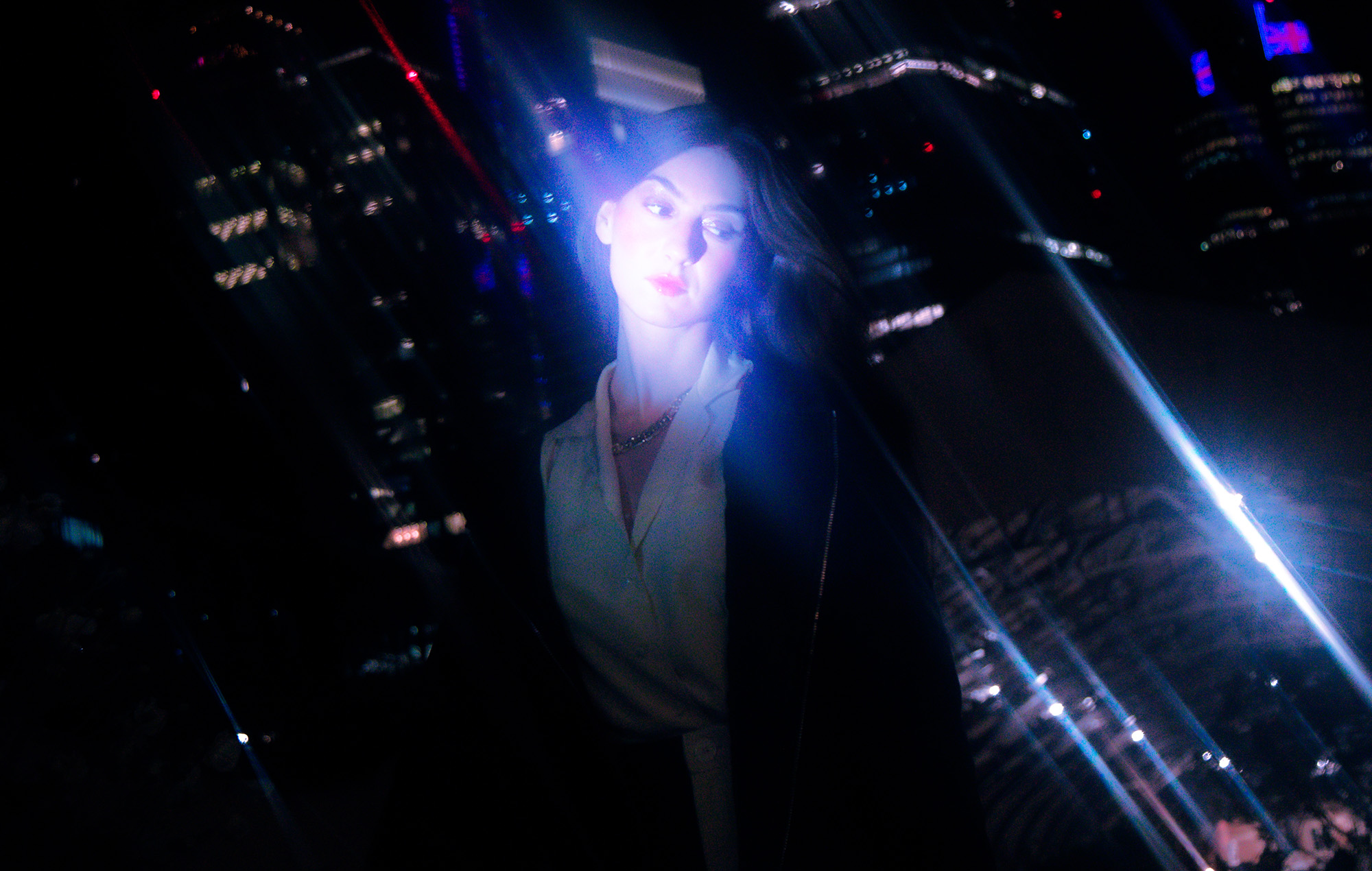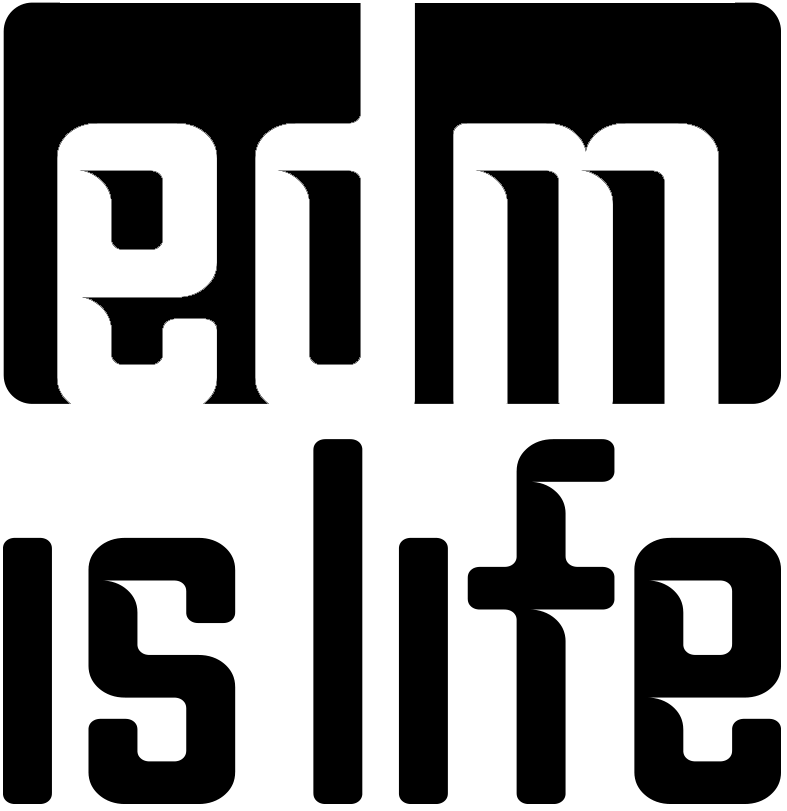
Weyes Blood: inside one of the year’s most breathtaking records
The only way that Weyes Blood stays sane is by reminding herself she isn’t alone. The artist, born Natalie Mering, is just as painfully aware of the escalating chaos of every part of the world today as the rest of us, and she actively leans on that sense of community to feel better in herself. Among other human beings, but also in the idea of myth and nature that permeates everything she does: a way to find light in the dark.
That darkness was a dot in the distance on 2019’s ‘Titanic Rising’, Mering’s masterpiece about impending doom and media consumption; ’And In The Darkness, Hearts Aglow’, out this Friday (November 18) is the second chapter of an ongoing trilogy, and is equally stunning. “The first record is an observation, sounding the alarms that shit is going to go down,” Mering says. “And then all the shit went down: this is my personal response to being in the thick of it.”
Mering is surprisingly composed when we meet in an eerily quiet east London hotel, on the day of The Queen’s funeral in early September. It’s a fitting day to reckon with the concept of myths and empires with an artist who’s always been led by them – what they teach us and how they betray us. But Mering has been waiting decades for this: she’s been performing as Weyes Blood since 2003, following stints in experimental rock bands Jackie-O Motherfucker and Satanized.
‘And In The Darkness…’ is Mering’s fifth solo album to date, crystallising all the conflicting philosophies and sounds that have helped her grow into the artist she is today. The resulting record is more lush and measured than you might imagine of somebody making sense of a global crisis on every level, but it is, strangely, where Mering, a self-designated “crisis person,” thrives.
“It’s when things are really going well that I actually get weird,” she says. “When things start going bad, something happens. I snap into gear. They say it’s like a survival thing: if you start freaking out when stuff starts going wrong, you’re going to maybe get hurt or die. So you go limp. When you fall, try to not get too tense, because the rigidity will make you less flexible when the rock tumbler starts.”
That sense of flexibility is potent on ‘And In The Darkness…’, with much of the pressurised cinematic quality of ‘Titanic Rising’ more loose in its storytelling here. There’s the same elegance led by Mering’s vocals, but more varied pacing and instrumentation – sometimes stark and stripped back, other times buoyant and almost crowd pleasing – which suggest something almost playful from Mering, and most definitely lighter. “I hoped the album would be like a beacon of hope in these times,” she explains. “I was like, if nobody wants to talk about it because it’s kind of embarrassing, I will.”
A foundational text for the album came to Mering during lockdown, in the shape of The Interior Castle, Teresa of Ávila’s 1577 spiritual guide, that follows a nun exploring a form of “interior architecture within herself”. A text ripe for exploration, it proved instrumental for Mering. “And I was like, if I can’t go out into the world and get inspiration for what I’m going to write about it, this is going to have to be about what’s going on inside of me. It made me make a very personal, confessional romance novel of an album.”
Much of ‘And In The Darkness…’ was recorded in Studio Three at EastWest Studios in the heart of Hollywood – significant as the birthplace of The Beach Boys’ seminal concept album ‘Pet Sounds’. Mering embraced this influence as part of her own sound, keeping her own identity while also benefiting from the “crazy sounds” of this room to record something more “elevated”.
Then there was Scott Walker, another avant-garde artist who didn’t quite know how – or even want – to fit in. “I feel like he’s kind of out of time with the world, and I always felt like that,” Mering says. “I’m not necessarily trendy. His stuff was just too orchestral and crooner for the ‘60s, but in hindsight, it makes so much sense. I also just feel like I can’t really fake it. I haven’t been able to change my music to be more modern.”
Mering needed to push forward and go deeper into her sound and herself, because something in her day-to-day, modern and uncomfortably alive as it may be, just wasn’t clicking. The swirling, even quietly cynical lead single ‘It’s Not Just Me, It’s Everybody’ is as much a reassurance as a concern that promises of togetherness that two years of isolation had given the world had actually backfired worse than we could have imagined – and the Americana-flecked (under which a nagging ultrasound effect hums) ‘The Worst Is Done’ admits that maybe we did just get it all wrong.
“People thought we were going to get more into IRL community rebuilding, but we ended up kind of leaning into our phones even more,” she says. “The hope was that the pendulum would swing, but when the world opened back up, we were just already down the rabbit hole of being that much more hooked into this technology being the source of income, the source of everything. People didn’t necessarily get kinder to each other. It was like gasoline poured on the fire.”
So what do you do? You learn to dance in the ashes, while looking out at the last gasp of flames in the horizon while thinking what you’ll do next. The ambitious ‘Children Of The Empire’ sees a community (read: a “westernised world that flatlined culture”) accepting the disillusionment that maybe the dream of society just… won’t happen for you.
“Maybe secretly we want to have the dream, the family, the house and everything, but just know we’re so far down the rabbit hole that we’re never going to quite be like previous generations. It’s a little bit like living in the wake of great death.” Imagine this, but set to as close as Mering might come to a cheery crowdpleaser of a melody: earworm chorus, warm backing choir, tumbling electric organ, those tubular bells and more.
Yet Mering isn’t fooling herself in trying to tangibly change the world in a massive way with her music. She’d like it to change, but is also keenly aware that a lot of her fans already feel the same way she does, namely when it comes to climate change. “Taking all the abstract information we have about it and turning it into an actual action is really hard,” she says. “Music doesn’t have the same kind of revolutionary flair it used to have. It serves more as a salve to just cope with reality, because we feel so gridlocked.” Could anyone really argue about a little relief from the crush of it all?
‘Hearts Aglow’, with its cinematic harp and easy beat, does find Mering embracing the powerlessness of it all, throwing her hands up and accepting that you don’t always have the answers – but can actually enjoy that kind of ignorance. “In the darkness / I can guide you in / we’re rising over the tide,” she sings, waving goodbye to her last album. It was in these moments of sometimes sad, sometimes hopeful realisations that Mering once more turned to literature to make sense of the present.
She holds a steadfast belief that we move in cycles, in patterns – so there is always a myth to turn to as a guiding force. She names the late academic and The Hero With A Thousand Faces author Joseph Campbell, the unofficial godfather of the study of mythology, as an everlasting influence, alongside other scholars who “studied the relationship between cultures and myths and different religions and the meeting points where they overlap.”
The artist also turns to religion in times of uncertainty, exploring Buddhism as a tool to help let go. “If you can soften your grip, you get a little bit of peace. If you can soften your grip even more, you get a little more peace. If you can let go fully, that’s when you get ultimate peace,” she explains.
Mering was raised in a deeply religious Pentecostal Christian family in Santa Monica, California. She finds strength and reassurance in the “brutality and simplicity” of Buddhism that move away from the “beautiful, human” side of Christianity which can feel a touch too personal – something Mering has felt pretty cynical towards since she was young and has always wrestled with in her music. “I think as long as you can hold the opposites, you’re doing a good job in life,” she says of her faith and what the world allows us to do with it. “Even down to atoms: everything is a marriage of two incompatible things.”
‘Titanic Rising’ isn’t fully incompatible with where ‘And In The Darkness…’ is or where Mering is going next, with the awfully romantic closer ‘A Given Thing’ evoking the piano-led simplicity that’s buoyed Mering through so much of her career. But when asked about her relationship with movies, the art form that sparked the fuse for the orchestral triumph that is the massive single ‘Movies’, it turns out things have changed a little. “[The pandemic] made me despise movies completely, I got burnt out watching stuff,” Mering says, begrudgingly admitting that in spite of it all: the only myths we have left today really might be television and movies.

Fate, myth, relief and calm; it doesn’t stop Mering from freaking out, but it makes it a little easier to live through it all. “I think our new myths are probably television and movies,” she says, reluctantly. “That’s like the new campfire, we’re gathered around the glow of our screen just absorbing the stories. But there’s also something a bit sinister about that, because it’s so driven by capitalism, not necessarily driven by an oratory tradition of passing down wisdom.”
So myth matters, but Mering does see light at the end of the tunnel for what comes next: a third and final album in the trilogy about “transcending all this stuff” and finding something “upbeat and hopeful” to cling onto. “It’s really good for trauma victims to dance,” Mering adds, pointing to “negentropy”, the process of things falling back into order, as an inevitable path for where we’re going.
But the myth that fascinated Mering to no end and helped this album’s emblematic track blossom was the story of Narcissus in Greek mythology, a hunter from Thespiae known for his beauty and obsessed with himself. The myth gave way to the sombre and stark ‘God Turned Me Into A Flower’, a lament pierced by Mering’s vocals as good as they’ve ever been. It’s simple musically, because the story she wants to tell is complex enough.
“I’d been trying to figure out what exactly was the crux of why everything felt so selfish and strange,” she says of her compulsion, ironically, towards Narcissus. “Colloquially, it’s become this idea that he was obsessed with himself, that he saw himself and was just obsessed with it. But the real crux of it is that he didn’t recognise himself. He was obsessed with the reflection, but he didn’t realise it was just him.”
In practice? ‘God Turned Me Into A Flower’, with its outgoing four-minute maelstrom of ethereal vocals, rising synths, jittering effects and eventual birdsong, warns us against the problems developed from the very technological advances we hoped would save us. “All of our mistakes in the human race come down to this: we are continuously using these technological frontiers to strive closer to something, not realising that it’s our own death. By destroying the planet, we destroy ourselves,” Mering explains. But, against all odds, she does also offer something of a solution.
“At the end of the myth, Narcissus gets turned into a flower, which is symbolic for something that’s just kind of pliable and goes with the flow of the universe. And ultimately, it’s soft. That’s the approach you have to take with all the uncertainty and irrevocable change that’s happening right now. If everything’s gonna fall apart, don’t be weak. Become soft.”
Weyes Blood’s ‘And In the Darkness, Hearts Aglow’ is released November 18 on Sub Pop





